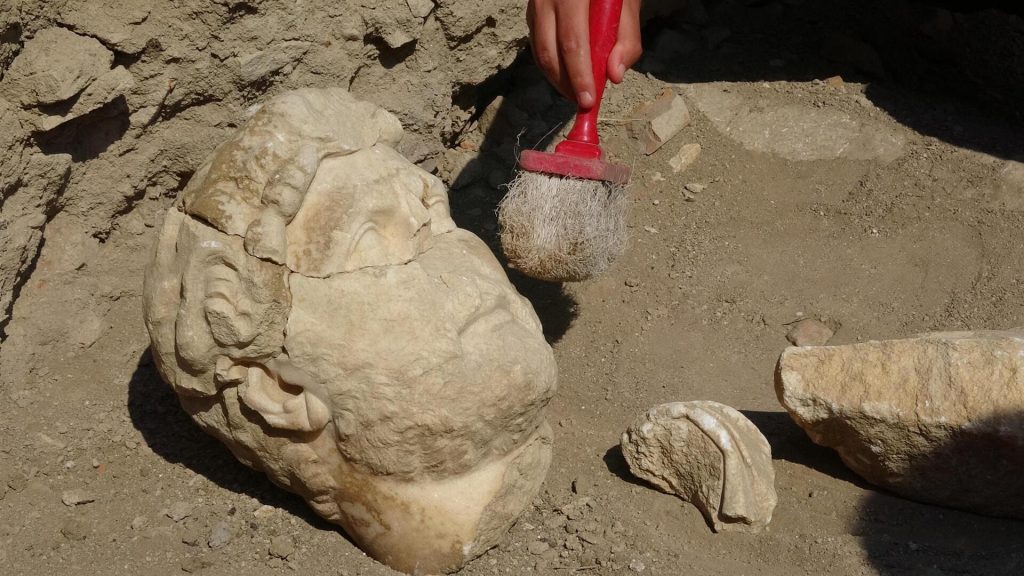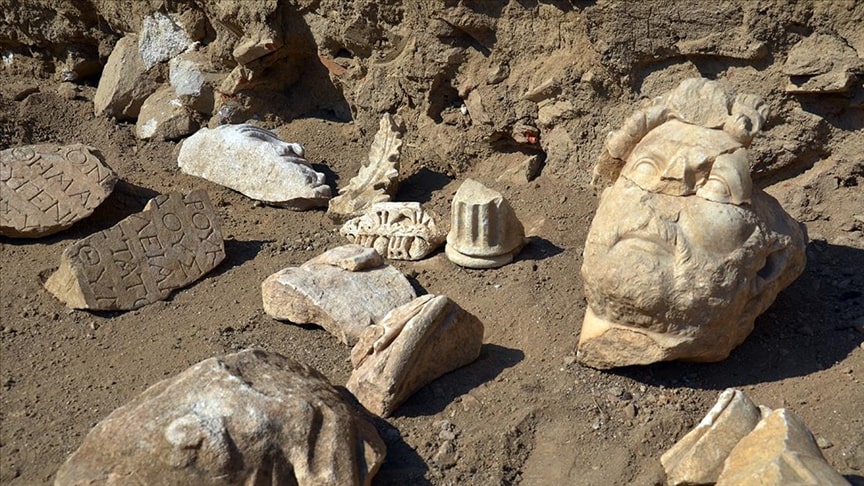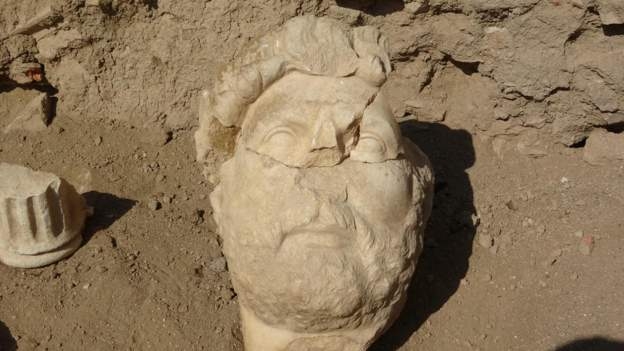In a remarkable archaeological discovery, excavations in the ancient city of Alabanda, located in the western province of Aydin, Turkey, have unearthed significant fragments of a marble statue depicting the Roman Emperor Publius Aelius Traianus Hadrianus. This find provides a valuable glimpse into the grandeur of Roman influence in Anatolia during the early second century AD.
The Ancient City of Alabanda

The ancient city of Alabanda, now situated within the boundaries of Doğanyurt village in the Çine District, holds a rich historical significance. The name “Alabanda” is derived from the Carian words for horse (Ala) and race (Banda), referencing a horse race won by King Kar’s son, Alabandos, according to Byzantine historian Stephanos. Spanning approximately 500 hectares, Alabanda is one of the largest ancient towns in Anatolia, reflecting its historical importance.
Ongoing Excavations

Since the commencement of excavations in 2015, led by Professor Ali Yalçın Tavukçu from Erzurum Atatürk University’s Department of Archaeology, significant progress has been made. The excavations have revealed numerous artifacts, including parts of a marble statue of Emperor Hadrianus. This statue, believed to date back about 1,900 years, was likely transported to Aydın around AD 120.
Fragments of the statue have been discovered across various locations within the ancient parliament building of Alabanda. These fragments include sections of the head and body, and ongoing efforts are focused on locating and assembling the remaining pieces. Once fully reconstructed, the 2.5-meter-tall statue will be transported to the Aydın Archaeology Museum for further study and public display.
Significance of the Discovery

The discovery of the Hadrianus statue is of great historical and cultural importance. Umut Tuncer, the Aydın Provincial Culture and Tourism Director, highlighted the significance of showcasing these artifacts at their original site. He anticipates that the completed statue will attract numerous visitors, contributing to the global appreciation of this rare find.
Professor Tavukçu emphasized the importance of the discovery, noting that the statue fragments were found in the billiardium, one of the three key structures in Alabanda. He described the statue as a “portrait sculpture” of Emperor Hadrian, who was known for his extensive travels and expeditions in Anatolia. The presence of this statue suggests there might be an accompanying inscription honoring Hadrian’s visit, which occurred during his rule from 117 to 138 AD.
Historical Context of Alabanda

Alabanda’s archaeological landscape includes various Hellenistic and Roman remnants, such as towering city walls, a theater, a senate house, and a people’s assembly structure. Notable features also include The Temple of Apollo, an agora, and mausoleums. Additionally, a Roman Period aqueduct can be found along the Kemer Creek in the southern part of the site.
Conclusion
The discovery of the statue of Emperor Hadrianus in Alabanda is a significant addition to our understanding of Roman history and its influence in Anatolia. As excavations continue and the statue is restored, it promises to offer new insights into the grandeur of Roman architecture and imperial presence in ancient Anatolia. The eventual display of this remarkable artifact at the Aydın Archaeology Museum will undoubtedly be a highlight for historians and visitors alike, bridging the past with the present in a profound way.
